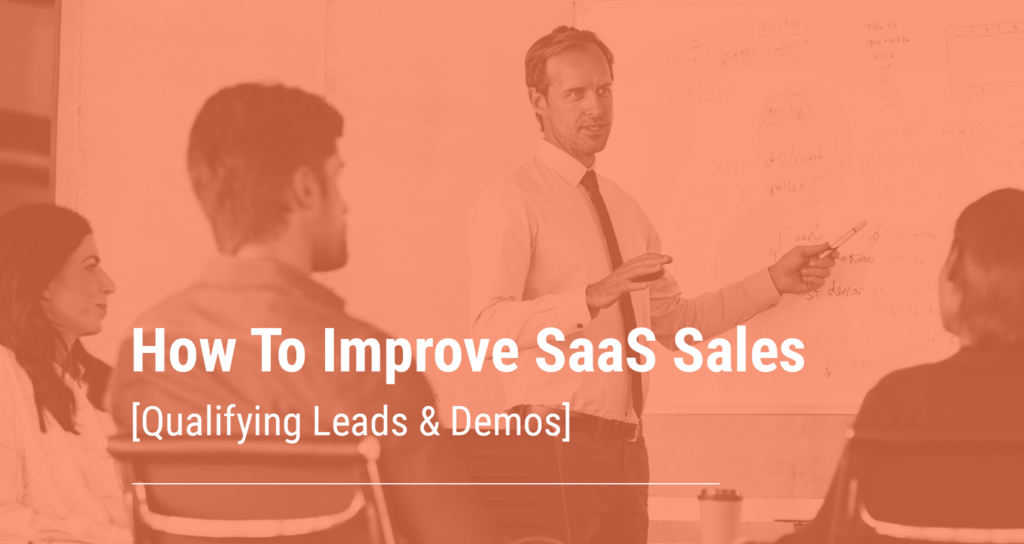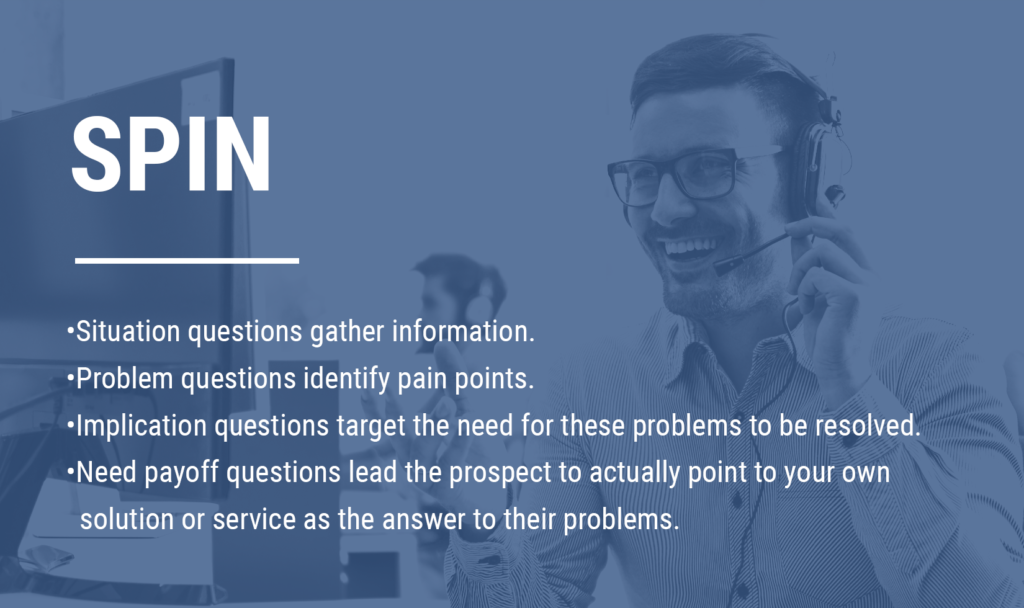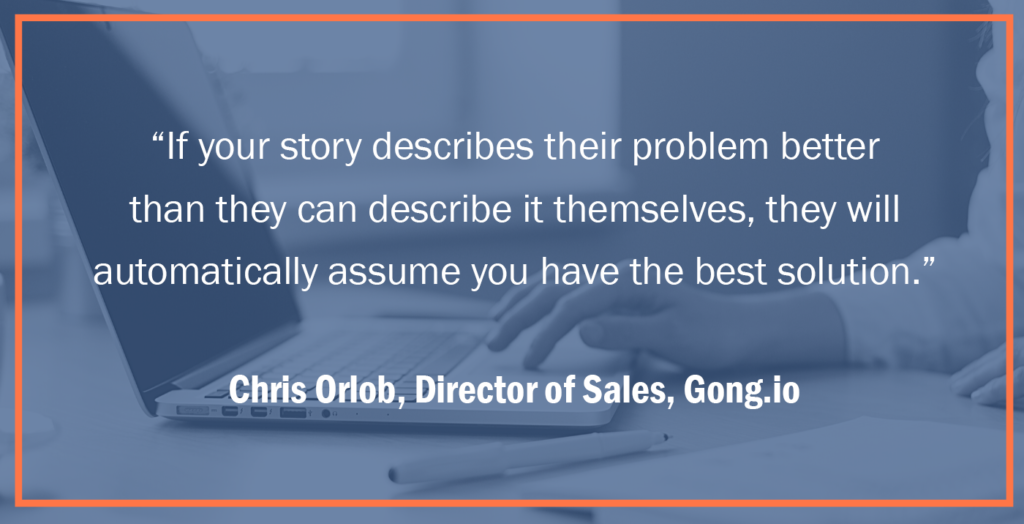
Of the many steps in SaaS sales solutions, our best candidates stress that none are more important to success than effectively qualifying leads and developing high-value software demonstrations.
Qualified leads provide efficiency, using collected information to identify the best opportunities or the ideal prospects to pursue. Effective demos clearly connect your prospects’ problems to your company’s solution.
We know from our longstanding work with leading SaaS companies that these critical components of the sales process drive higher conversions and improve their SaaS sales performance.
Effectively Qualifying Customer Leads
Any strategic discussion about improving the sales funnel and capturing leads starts with technology. Use of sales technology is both an emerging and enduring trend of all sales organizations. Sales technology, which includes collaboration tools, customer relationship management (CRM), networking platforms, sales intelligence tools, productivity tools, email tracking, and enterprise communications, are becoming operational imperatives ushered in by COVID-19 and its impact on the shift to remote work.
However, even before the pandemic, sales intelligence tools — software that provides contact data and contact insights — were already on the rise. Overall, sales professionals using sales intelligence tools increased from 28% in 2018 to 43% in 2020, with 74% of sales intelligence users describing these tools as either “extremely critical” or “critical” to closing deals.
The global sales intelligence market is expected to grow to $3.4 billion by 2024, an increase of $1.4 billion in five years. Sales intelligence tools can give SaaS sellers a powerful way to discover new, high-quality leads, enhance other lead-generation efforts, maintain a continuous pipeline, and boost sales team efficiency. SaaS companies that develop a clear data strategy have the potential to energize marketing initiatives, increase software sales and customer success, and increase proactiveness.
Not surprisingly, sales organizations with a clear data strategy reported their reps made goal 11% more of the time. Evaluating existing tools and keeping abreast of new introductions to sales intelligence tools will continue to be important to evolve SaaS companies’ sales processes and to improve SaaS sales.
Given this surge in technology, SaaS company management should be the first to foster skill development in these technologies by their sales team members. Top-performing salespeople — those who achieved 125% of their quota — were more engaged in technology when compared with their lesser-performing counterparts. Specifically, they:
- Used enterprise communications — phone, email, video conference, web chat, texting — and sales intelligence tools.
- Possessed a better facility with CRM data.
- Spent more time training with their managers and were more likely to train with outside sales experts.
- Were more likely to analyze patterns from closed-won and closed-lost business.
Spinning SaaS Sales the Right Way
SaaS sales techniques will no doubt increasingly rely on technology to improve results. Yet, many are going back to a basic, SPIN Selling, as a successful technique for qualifying customers in discovery — but with a modern, updated twist.
SPIN is the four-stage sequence outlined by Neil Rackham in his ground-breaking book that argued that sales success relies on building trust with a clearly defined, targeted, and sequenced series of questions in the discovery call. The model spells out SPIN this way:
- Situation questions gather information
- Problem questions identify pain points
- Implication questions target the need for these problems to be resolved
- Need payoff questions lead the prospect to actually point to your own solution or service as the answer to their problems, putting your product in a positive light and naturally diverting any objections against it.

Even with today’s technology, some are finding SPIN is still more relevant than ever, with adjustments. You may no longer need to ask some of the Situation questions, for instance, because sources like Google, social media, LinkedIn, and online review sites provide a wealth of information to mine basic, generic questions such as company size or customer base.
Instead, SPIN allows sales reps to ask questions in a much more refined way, elevating the conversation to establish their value as support people keenly interested in problem solving. An updated set of questions might like look this:
- What are your biggest challenges with X?
- What prevents you from achieving your goals with Y?
- What happens if you don’t accomplish Z?
With SPIN, discovery calls can be elevated to a conversational artform, one aspect of improving SaaS selling techniques to engender greater success. With a planned and orchestrated level of customer engagement, top-performing reps expertly disperse their SPIN questions throughout a phone call, versus average-performing reps who cram them all at the beginning.
Make the Demo Work Hard for You
Once you have an interested prospect, the demo is one of the next big steps in your SaaS sales strategy. The demo provides prospects a chance to see just how your solution meets their needs, how it addresses their pain points. So how do you get the most value out of these demos and improve SaaS sales?
Show Flexibility
Especially in the time of COVID-19, develop the ability to deliver your demo on a number of channels, including live video chat, pre-recorded video, email, and phone — and even mix them up. With online and video meetings continuing into the future, a combined sales presentation and demo can include a pre-recorded video that becomes a centerpiece, bookended by introductions and an overview on one end and a personalized, customer-focused Q&A on the other of the presentation.
Put the Good Stuff Upfront, and Begin with an Overview
Sales demos are stories and should read like a newspaper feature — with the juiciest revelations right at the top followed by elaboration. In the case of SaaS companies, sales presentations + demo combinations that begin in two steps have been shown to have the best success at closing the sale by contextualizing the company first, and then launching into key aspects of the product second.
We know that companies have to work harder than ever to differentiate themselves, especially to increase software sales. In our work with leading SaaS companies, how you talk about your company mission, how you got where you are, and what you believe in is your branding and your unique story to connect the prospect to your values — and your SaaS solutions.
It’s no surprise, then, that compared with presentations + demos that launched immediately into the solution and left the high-value points for the end, demos had higher rates of closing when they contextualized the company’s narrative and how it relates to solving problems for their industry and then segued into the most talked about use cases.
So how can you improve sales with your presentations and demos? Start by demonstrating how the company has developed overall into a problem solver, and then demonstrate the problem-solving tools. That combination increases software sales.
“If your story describes their problem better than they can describe it themselves, they will automatically assume you have the best solution.”
Chris Orlob, Director of Sales, Gong.io

How to Improve Sales by Tailoring to Your Audience
You want to create your sales demo based on the pain points of your prospect, showing how you can solve the specific problem(s) experienced at their business. And part of that process is the research you do into their product or service, their customer and geographical base, and the like.
But the true SaaS sales hero knows that customizing the demo to the specific requirements of your prospect focuses attention on only those features of your product that are pertinent, avoiding a download overload or even worse, a step-by-step review of the entire product’s features.
Personalizing the demo is an important step in how to sell SaaS solutions, showcasing the rep’s expertise and establishing them as a champion of that company. Even to the point of customizing sample data in the presentation to the prospect’s situation and the language of the demo to align with their region and technical vocabulary — all of which promote affinity. It is one proven part of engendering trust, and a step in how to improve SaaS sales. Speaking in jargon can be efficient, but it can also be alienating and create confusion.
Listen — a lot
There’s of course all the listening that comes before even creating the demo to ensure you have rightly fixed on a prospect’s pain points and that the demo you’ve created will answer their needs.
Then there’s the presentation + demo time frame itself. How much talking are you doing versus your customer? In one analysis of over 67,000 SaaS demos, the winning demos, those that led to a closed deal, followed a pattern: presentation of no more than 76 seconds followed by customer comments, and repeat throughout the rest of the presentation. Whereas, demos marked by a pattern of 106 seconds or more of presentation before a customer chimed had a lower close rate. In addition, more deals were closed in those cases where the demo shifted at some point from a presentation-heavy format to a dialogue-rich exchange.
We know that real conversation — knowing what to ask and how to ask it — is one of the best tools for recruiters. It’s no different in sales. The simple act of listening captures the attention of your prospect. In the LinkedIn State of Sales Report 2020, active listening ranked as the number one attribute buyers most valued in salespeople, while it “didn’t even rank in the top five for sales managers in their hiring process for reps.”
Check your SaaS Sales Technology
When a demo (or presentation + demo) is online, double-check all the equipment and all the materials are working and ready to go beforehand. As well, technology should be “checked” another way: mute phones; silence text messages; close all other browser windows — hold all calls! Listening is hard enough in a meeting when you are trying to make an impression and close a sale, but attention pulled toward other electronics or digital commitments hampers active listening and readiness to answer questions.
Don’t Forget Next Steps
You’re in the final stretch of your demo + presentation … and? The most effective SaaS sales strategy leaves pricing to this point, and then wraps up with next steps. You’ve already proven your expertise, your trustworthiness, and the value of your product, now talk about follow-up. Close rates decrease by up to 70% when sales reps fail to zero in on those next steps and get prospect buy-in and agreement by the end of the call. During successful calls, four minutes more were spent on next steps than during unsuccessful calls.
Improve SaaS Sales by Engaging with a Sales Headhunter
Research, deep listening, high engagement and personalization are essential strategies for SaaS solution selling. They also are critical components for successful sales headhunters.
If you are building your SaaS sales team from the ground up or bringing on a director or VP to take the team in a new direction, DANA Associates will find you the most highly qualified prospective employees. We specialize in finding the right people to fill upper-level sales positions, and we have a reputation as one of the best sales headhunters in the Northeast. To learn more about our in-depth, personalized process, schedule an introductory call today.
